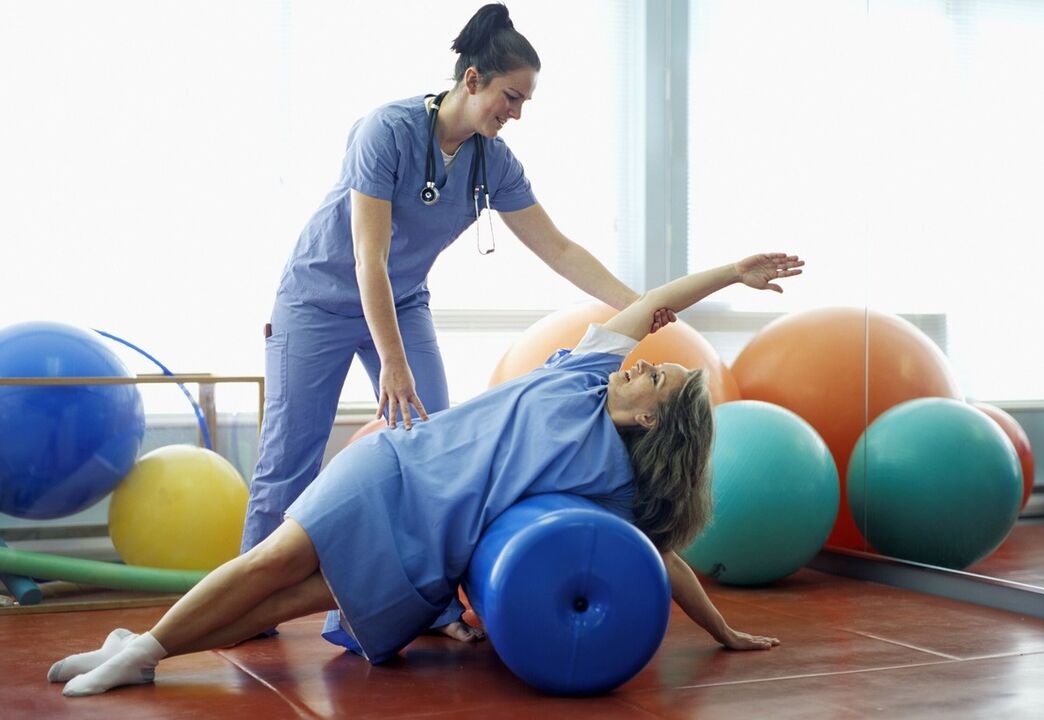
Arthritis is a painful change and deformity of the joints. It occurs when joint cartilage is damaged beyond repair. With conservative or surgical treatment, the symptoms of joint wear can be significantly reduced.
Disease overview
- The following joints are most commonly affected: knees, hips, shoulders, spine, fingers and toes, ankle joints;
- The most important signs: pain with exertion, pain at the beginning of exercise (at the beginning of physical activity), reduced range of motion, deformity of the joints, period of illness: swelling, redness, persistent pain;
- Diagnosis: physical examination, X-ray, computed tomography (CT) or magnetic resonance imaging (MRI);
- Treatment: exercise, heat or cold procedures, analgesics, intra-articular injections (hyaluronic acid, chondroitin sulfate), in the later stages - joint replacement (surgery);
- Note: many joints do not need long-term treatment but must conduct adequate physical therapy and prevent exacerbations, if necessary, the pain syndrome should be terminated.
Osteoarthritis treatment methods
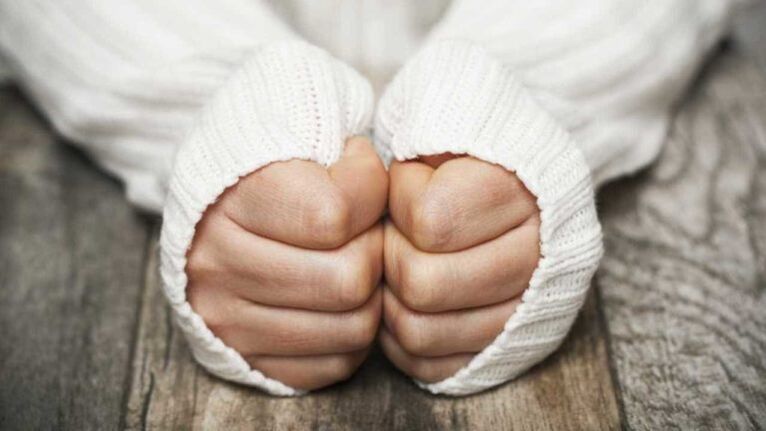
What helps with osteoarthritis or joint disease? For most patients, this is the main question. Answer: There is currently no treatment for osteoarthritis that can restore damaged cartilage.
Osteoarthritis treatment can only relieve the symptoms of the condition. In addition, treatment should prevent prolonged wear and tear of the joints.
Because this disease also leaves traces that the joint capsule is worn away over time, causing damage to the joint capsule, bones and muscles.
Treatment of osteoarthritis includes conservative and surgical procedures. Doctors will choose the most appropriate method for each patient. Among other things, it assesses which joints are affected, the amount of general wear and tear, and the severity of symptoms.
Conservative treatment
Conservative osteoarthritis treatments are designed to relieve pain, fight inflammation, and increase muscle strength and coordination. A great role is assigned to physiotherapeutic procedures, which are performed both during exacerbations and during the "calming down" of symptoms.
Physiotherapy treatment
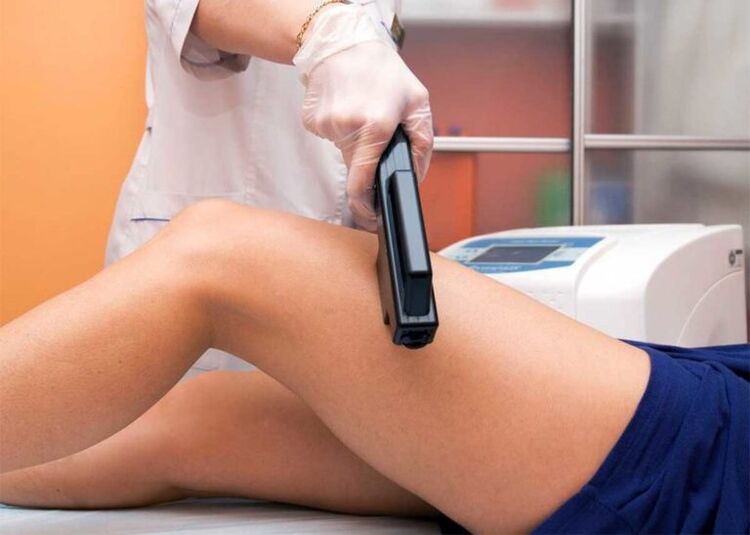
Various forms of physical therapy can relieve the symptoms of osteoarthritis. Including:
- Physical therapy;
- Manual therapy;
- Heat therapy (not in the acute phase);
- Cryotherapy (in the acute phase);
- Practice sports that are good for joints such as Nordic walking, swimming and cycling;
- Water therapy and bathing;
- Electrotherapy;
- therapeutic ultrasound;
- Orthopedic tools.
To treat chronic osteoarthritis pain, you can use heat from heating therapies, compresses, baths, or infrared light. On the other hand, severe swelling and discomfort will be minimized with cold or ice therapy.
Physical therapy is also helpful in treating arthritis because it strengthens the muscles. Massage is also recommended: it relieves stress and improves blood circulation.
Joint movement during exercise
Regular exercise keeps your joints flexible. Therefore, people with osteoarthritis should include sports in their daily life. Swimming is a prime example. It trains the joints without burdening them too much. For the same reason, it is advisable to walk on the plains and ride a bicycle.
Exercise can not only prevent but also slow down the process of osteoarthritis and reduce symptoms.
Less suitable for osteoarthritis are sports that involve sudden, significant joint stress, extreme movement, or a high risk of injury. These include, for example, tennis, skating, soccer, handball, karate and boxing.
General fixed
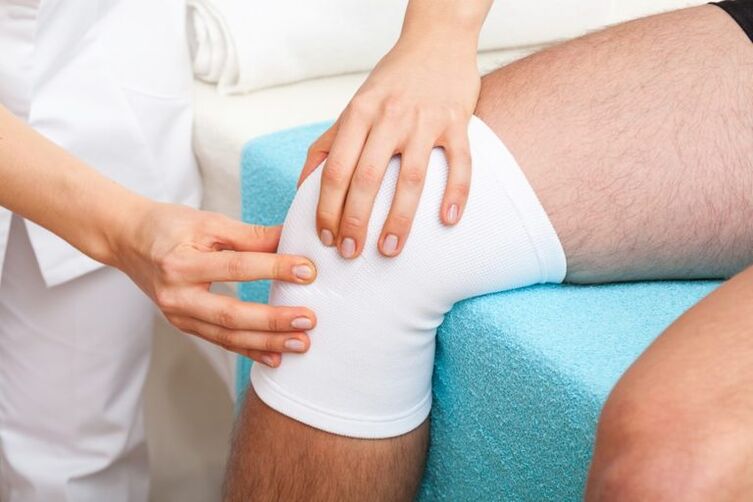
Bandages, elastic bands, soft soles and crutches facilitate the operation of the joints. Editing helps in a similar way. These are special support devices for joints. They block painful movements. However, orthotics are not very flexible and only need to be worn for short periods of time to prevent joint stiffness.
If the person is overweight, try to lose weight. As a result, the joints will carry less stress. Regular exercise and a healthy diet help with weight loss.
Medicines for pain and inflammation
Painful joints from osteoarthritis can be massaged with pain-relieving ointments, creams, or gels from the pharmacy.
Local anesthetics are used to relieve pain: they are injected into the joint or around the affected area.
Osteoarthritis (or joint disease) is usually a non-inflammatory process. However, the inflammatory process is often involved in the tissues affected by osteoarthritis. Then they talk about osteoarthritis or arthritis triggers.
For treatment, doctors usually prescribe non-steroidal anti-inflammatory drugs (NSAIDs). Sometimes glucocorticoids are also injected into the joint to fight inflammation.
Some patients receive intra-articular injections of hyaluronic acid or chondroitin sulfate to treat osteoarthritis. These are glycosaminoglycans and natural components of synovial fluid. By injecting hyaluronic acid directly into the affected joint, its mobility is restored.
Surgery
Surgery can correct problems in patients with osteoarthritis and stabilize joints. It also relieves pain and prevents inflammation. In some cases, damaged cartilage is replaced during surgery. Osteoarthritis patients have better mobility after surgery.
Wash and treat joints

In osteoarthritis, the affected joint is sometimes washed with saline. This is most often done, for example, with the knee joint.
Flushing the bursa removes damaged cartilage and tissue fibers, as well as other particles floating in the synovial fluid. Additionally, the procedure will calm any existing inflammation in the joint.
Reorganization means a complex treatment of capsule joint. The rough surfaces of cartilage in the joint are removed with instruments. It also removes areas or tissues that may interfere with joint mobility. Acute pain, at least temporarily, goes away after treatment.
Joint treatment is done as part of arthroscopy. Surgical instruments are inserted into the joint through very small incisions.
Stimulates cartilage growth
During arthroscopy, small injections of the remaining surface of the cartilage are made for therapeutic purposes. This will stimulate the chondrocytes to form replacement tissues. However, this new cartilage tissue has a different structure from the original cartilage and does not fully meet the requirements for the joint.
During some years of the disease, in some cases, cells can also be transplanted into the damaged joint.
Adjust
Corrective chiropractic repositions the bones so that the load is more evenly distributed over the joint surfaces: some of the pressure is transferred from the degenerative joint to areas of healthy cartilage and bone. In most cases, this type of osteoarthritis treatment also includes improving the function of the capsule and ligaments to restore joint mobility.
Joint replacement
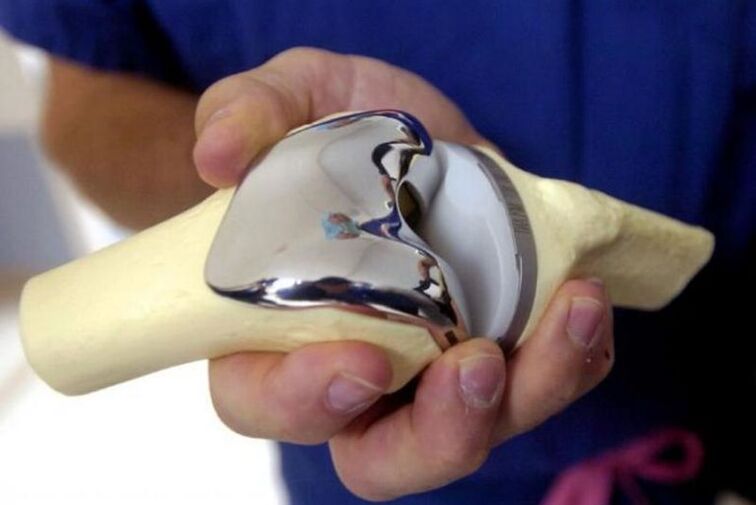
If pain cannot be relieved by any other osteoarthritis treatment, joint replacement may be possible. This means that the damaged joint (or parts of it) is replaced with an artificial joint. Basically, surgery is done in case of knee or hip arthritis.
Complex replacement is the last option
Strictly speaking, worn-out joint tissue and joint surfaces are surgically removed and replaced with metal, plastic, and ceramic prostheses (alloarthroplasty). There are prosthetics that replace only parts of the joint and there are prostheses that are used to replace the entire joint. They are fixed on the surface of the bone or with screws. With this method of treating osteoarthritis of the knee, if necessary, it is possible to correct the position of the joint.
After a while, each prosthesis can wear out. The time when this happens depends on various factors: age, sex, clinical picture of joint disease, infection, joint type, and type of restoration.
A lightweight prosthesis needs to be replaced more often. Prosthetic wear can be detected promptly with regular radiographs.
Arthrodesis
Arthrodesis can help control the pain of osteoarthritis. Here's how to strengthen the affected joint: it's more stable but also less mobile. Therefore, joint surgery is usually performed only on joints where lower mobility does not interfere with the patient's daily activities. These include the joints of the fingers and toes, and the small joints in the wrists.
Change
In this form of osteoarthritis treatment, damaged joint organs are removed and surgically reconstructed without restoration. However, arthroplasty is rarely used today.
This option may be considered for rheumatoid arthritis of the thumb (rhizarthrosis), particularly if conservative treatment of osteoarthritis has not been successful. One of the affected super muscles will be removed and replaced with the body's own tendon tissue. Usually the tendon of the long muscle of the thumb or the tendon of the flexor muscle is used. This form of treatment for rhizarthrosis is not considered a standard approach.
An arthroplasty is also performed for big toe joint disease or joint disease between the collarbone and shoulder blade.
Alternative treatment for osteoarthritis

What helps with osteoarthritis besides mainstream medical procedures? This question is of interest to many patients. They want to support treatment with simple "natural" methods. Although many alternative methods have not been scientifically proven to be effective, they are effective in reducing osteoarthritis pain in some patients. Homeopathy, herbal medicine, magnetic therapy, and acupuncture are widely used to relieve the symptoms of arthritis.
Salt and homeopathy
In many cases, osteoarthritis patients rely on these two alternatives, salt and homeopathic seeds, to relieve their osteoarthritis symptoms. In addition, the foot bath, salt compress should also prevent bone and joint diseases. Advocates say both treatments have no side effects and are therefore suitable for self-medication.
Experts recommend using the mineral in combination with ointments or gel creams. Homeopathic treatments for osteoarthritis should be discussed with an experienced therapist.
Plant matter
For centuries, the treatment of bone and joint diseases has also relied on medicinal plants. These include African devil's claw, nettle, bellflower, willow, dandelion, cayenne pepper, and rose hip. However, the symptoms of joint disease will improve if you use the herb for a long time. Your doctor or pharmacist will advise you on the correct usage and dosage.
Magnetic therapy
Magnetic therapy for arthritis is designed to relieve pain, restore joints, and improve a patient's quality of life. The magnetic field is generated by a naturally magnetic stone or by an electric coil.
Medical research has shown that magnetic therapy can be particularly helpful for osteoarthritis of the knee. But patients with chronic conditions in many joints (polyarthritis) should also benefit. No side effects have been noted with this alternative treatment for osteoarthritis.
X-ray therapy
X-ray arthritis treatment is designed to suppress inflammation and improve blood circulation. Irradiation should be done at regular intervals and using only very small doses of radiation.
For example, X-rays are used in the treatment of rhizarthrosis and the treatment of Heberden's osteoarthritis.
Acupuncture
Stimulating certain points on the skin with acupuncture to normalize disturbed processes in the body again. Usually, the course of treatment requires several sessions.
The use of acupuncture for osteoarthritis is not widely accepted. However, some patients say acupuncture can actually help with arthritis pain. Especially with the combination of structural abrasion of the knee, acupuncture can relieve chronic pain.
Bones and nutrition
The link between arthritis and diet is often debated: can an unfavorable diet contribute to osteoarthritis? Should I change my diet when I have osteoarthritis?
In general, some foods cannot be said to be the cause of osteoarthritis. However, the type of diet can really affect its course: what matters is how much we eat and how we prepare it.
Fewer calories
As you gain weight, the load on your joints increases and as a result, they wear out faster. Therefore, overweight people have a higher risk of osteoarthritis.
If you already have osteoarthritis, obesity contributes to combined wear and tear, especially in the knees.
Obesity greatly affects the joints. Being overweight at a young age is especially serious.
Therefore, bone and joint nutrition should be adjusted by counting calories if the patient tends to be overweight. A healthy body weight eases joints, which can ease discomfort during illness and slow the progression of changes.
Less animal fat

A proper diet for osteoarthritis means reducing your intake of meat and other animal products. The reason: In damaged joints, inflammation develops more easily than in osteoarthritis. Several metabolic products mediate these inflammatory responses in the body and are made from arachidonic acid (an omega-6 fatty acid). These are mainly animal products.
Therefore, the diet for people with osteoarthritis should limit the use of arachidonic acid. Instead, you should eat more foods with more omega-3 fatty acids because they inhibit the inflammatory response. For example, omega-3 fatty acids are found in canola and flaxseed oils and in oily fish such as herring, mackerel, and salmon.
Therefore, the following guidelines apply to an appropriate diet for arthritis:
- Reduce meat and egg consumption;
- Fish in the diet twice a week (eg salmon, mackerel, herring);
- Use vegetable oils such as canola, linseed, sunflower, or olive oil;
- Eat lots of fruits and vegetables;
- Whole grains and legumes are preferred;
- Drink at least 1. 5 liters of water or unsweetened tea per day;
- Calcium from low-fat dairy products helps strengthen bones
- Avoid caffeine, alcohol, and nicotine.
Such a diet for joint disease cannot replace other treatments, but it can intelligently complement them. This means that although the diet does not cure osteoarthritis, it does have a positive effect on the patient's condition.
Constantly on the move!
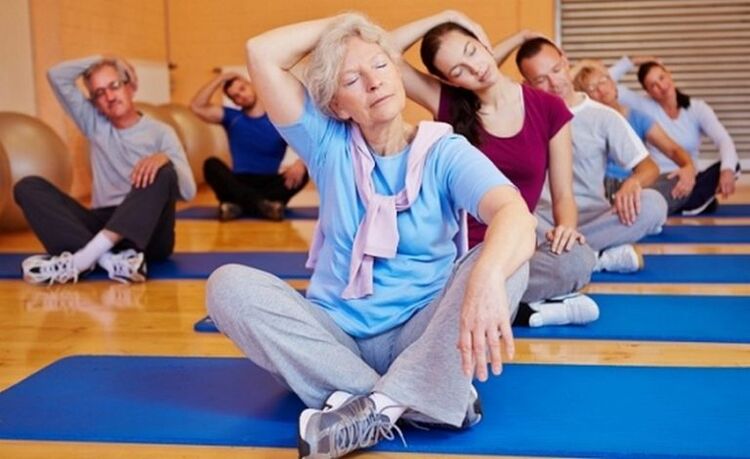
Despite the possible pain, "immobilization" in osteoarthritis is not a good idea - it actually speeds up the destruction process.
Only during joint activity and during movement of joint surfaces is a lubricant, called synovial fluid, formed, which reduces friction in the joint and provides nutrients to the cartilage. .
Ideal exercises that don't stress joints: swimming, cycling, Nordic walking and gymnastics.



























